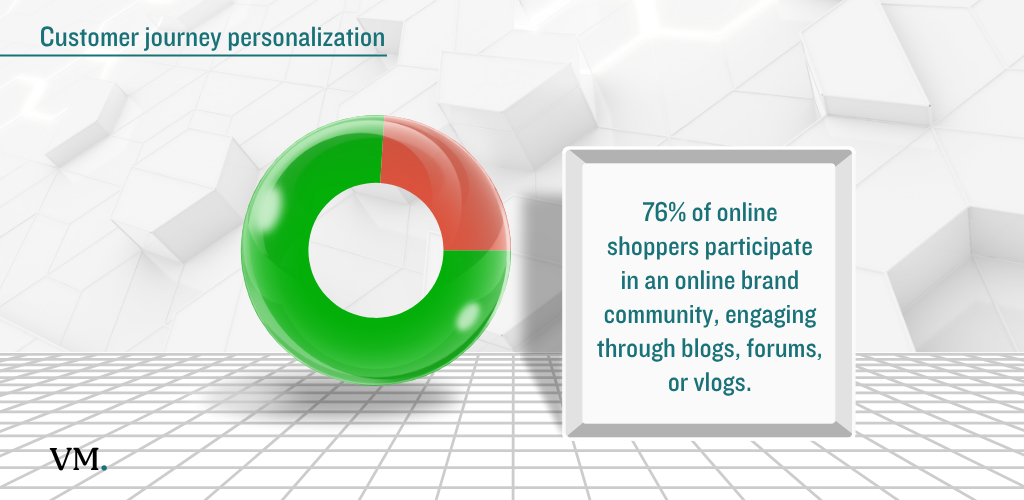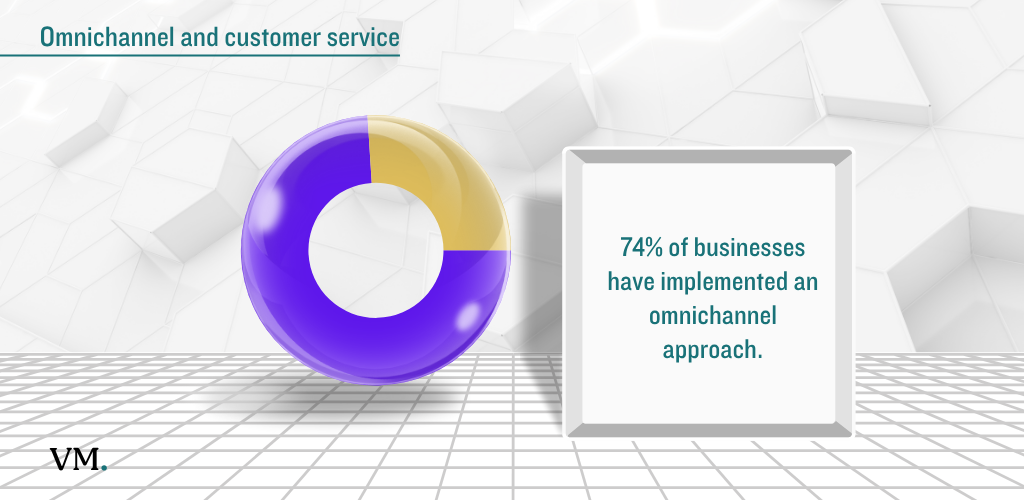Customer Data as a Foundation
D2C brands collect and analyze customer data at every touchpoint. This information shapes product development, marketing strategies, and service improvements. D2C brands use purchase history, browsing behavior, and direct feedback to anticipate customer needs and personalize their offerings. Nike, for example, relies on its membership program and app data to inform product launches and marketing campaigns.
Storytelling and Brand Identity
A strong brand narrative attracts and retains customers. D2C brands share their values, mission, and origin stories through social media, websites, and packaging. This approach builds trust and emotional bonds. Allbirds focuses on sustainability in its messaging, while Warby Parker highlights affordability and social impact.
Community Engagement
D2C brands foster active communities around their products. They encourage customers to share experiences, reviews, and content. Social media groups, branded events, and loyalty programs create a sense of belonging. Sugar Cosmetics regularly features user-generated content and hosts interactive online events, strengthening its fan base.
Personalization and Technology
Direct-to-Consumer (D2C) brands are setting new standards for customer experience and business innovation in 2025. These companies use technology, storytelling, and customer engagement to create powerful connections and drive growth.
Omnichannel Presence
Many D2C brands expand beyond online sales. Pop-up shops, flagship stores, and partnerships with select retailers increase visibility and reach. These physical touchpoints offer customers the chance to interact with products and brand representatives in person. Sonos, for instance, operates stores that allow customers to test audio equipment before purchasing.
Customer Service Excellence
Responsive and helpful customer service sets D2C brands apart. Live chat, fast shipping, and hassle-free returns build trust and encourage repeat purchases. Brands track satisfaction metrics and respond quickly to complaints or questions.
Business Models and Growth Strategies
D2C brands use different models to scale. Some focus on a single product category, like Casper with mattresses. Others offer subscriptions, such as Dollar Shave Club. Hybrid models combine direct sales with marketplace listings, as seen with Minimalist. Influencer partnerships and viral campaigns drive brand awareness and customer acquisition.
Challenges in the D2C Space
Competition is intense. Customer acquisition costs are rising, and retaining loyalty requires ongoing innovation. Logistics, fulfillment, and customer service demand investment and operational expertise. Brands monitor performance closely and adapt strategies to maintain growth.
Examples of D2C Success
- Sonos increased D2C sales by 67% year-over-year after launching exclusive online experiences.
- Warby Parker set a new standard in eyewear with its home try-on program and AR features.
- Sugar Cosmetics built a strong community through influencer collaborations and engaging social content.
The Path Forward
D2C brands thrive by understanding their customers, delivering personalized experiences, and building strong communities. Technology, storytelling, and responsive service drive loyalty and growth. As the market evolves, these companies continue to set benchmarks for innovation and customer engagement in the digital age.
The Impact of Storytelling, Community, and Personalization on D2C Brand Growth—By the Numbers
Direct-to-Consumer (D2C) brands are leveraging storytelling, community engagement, and advanced personalization to drive loyalty and business growth in 2025. This chapter presents the latest statistics illustrating how these strategies are shaping the D2C landscape.
Storytelling: Building Emotional Connections and Driving Sales

- Storytelling marketing has experienced 46% growth, reflecting its rising importance in brand strategy.
- Brands that use effective storytelling see a 30% increase in conversion rates.
- 15% of consumers will make an immediate purchase if they genuinely connect with a brand’s story.
- Authenticity is vital: 86% of consumers say it is a key factor in deciding which brands to support.
- 92% of consumers want brands to create ads that feel like stories, and 64% want brands to connect with them emotionally.
- Storytelling can boost perceived product value by up to 2,706%.
Community Engagement: Fostering Loyalty and Participation
- 76% of online shoppers participate in an online brand community, engaging through blogs, forums, or vlogs.
- Social media is a primary driver: 62% of consumers find it the most popular channel for brand building, and 72% of brand engagement happens on local pages.
- High engagement rates in online communities signal strong brand connections and successful community strategies.
- Tracking member growth rates helps brands assess the effectiveness of their community-building efforts and scale their reach.
Personalization: Meeting Rising Consumer Expectations

- 80% of consumers are more likely to purchase from brands that provide personalized experiences.
- 72% of consumers will only engage with personalized messaging, highlighting the need for tailored communication.
- AI-driven personalization can lift retail revenue by 10–30%, making it a critical differentiator in crowded markets.
- 69% of adults emphasize the necessity of human support alongside AI in customer service, indicating that blending technology with a human touch is key to satisfaction.
Omnichannel and Customer Service: Seamless Experiences Matter
- 74% of D2C brands have implemented an omnichannel approach, allowing brands to engage customers across digital and physical touchpoints.
- Omnichannel shoppers who use four or more channels spend 10–20% more than those who use only one, demonstrating the value of a seamless, multi-channel experience.
- As of early 2025, e-commerce sales are projected to reach $7.5 trillion, with brands focusing on omnichannel strategies, AI, and automation to meet 24/7 consumer demand.
- Despite technological advancements, consumers remain critical of online services compared to in-store, pushing brands to refine their digital offerings and maintain a human element in service interactions.

Storytelling, community engagement, and personalization are not just buzzwords—they are measurable drivers of D2C brands success in 2025. Brands that invest in authentic narratives, foster active communities, and deliver personalized, omnichannel experiences are seeing higher engagement, stronger loyalty, and increased sales. The data underscores a clear message: meaningful connections and tailored experiences are at the heart of the modern D2C business model.
- Response Rate: How quickly members respond to questions or discussions within the community. A fast response rate indicates an engaged and supportive community environment.
- Community Sentiment: Analyzes the emotional tone of interactions and feedback using sentiment analysis tools. Positive sentiment reflects strong emotional bonds and brand loyalty.
- Conversion Metrics: Measures how community engagement translates into business outcomes like purchases, referrals, or increased customer lifetime value. Tracking conversion rates among community members helps quantify the community’s impact on revenue.
- Customer Support Metrics: Tracks peer-to-peer support activity, resolution times, and the community’s role in reducing official support burdens, which builds trust and satisfaction.
Together, these metrics provide a comprehensive view of a brand community’s health, growth, engagement quality, and business impact. Brands like Nike, Sephora, and Apple use these indicators to optimize their community strategies and foster loyal, active customer bases
The Role of Emotional Intelligence in Building Successful D2C Brand Communities
As Direct-to-Consumer (D2C) brands continue to innovate in 2025, one often overlooked but increasingly critical factor in building strong brand communities is emotional intelligence (EI). Emotional intelligence—the ability to recognize, understand, and manage emotions in oneself and others—plays a pivotal role in how brands connect with their customers on a deeper level, fostering loyalty and advocacy beyond traditional marketing tactics.
Understanding Emotional Intelligence in the D2C Context
In the D2C space, emotional intelligence manifests through authentic communication, empathy-driven customer service, and community management that prioritizes genuine human connection. Brands that practice high EI are better equipped to:
- Respond thoughtfully to customer feedback, both positive and negative
- Create marketing content that resonates emotionally rather than just intellectually
- Build trust by acknowledging customer concerns and celebrating their successes
- Foster inclusive communities where diverse voices feel heard and valued
Emotional Intelligence Enhances Customer Engagement
Research shows that emotionally intelligent brands achieve significantly higher engagement rates. Customers are more likely to participate in brand conversations, share user-generated content, and advocate for brands that demonstrate empathy and understanding. For example:
- Brands that respond promptly and empathetically to social media comments see up to a 25% increase in positive sentiment and repeat engagement.
- Personalized outreach that acknowledges customer emotions, such as celebrating milestones or addressing frustrations, boosts community participation by 30%.
Emotional Intelligence Drives Conflict Resolution and Community Health
Online communities inevitably face conflicts or misunderstandings. Brands with strong emotional intelligence can mediate disputes effectively, turning potential crises into opportunities for strengthening relationships. Techniques include:
- Active listening to understand all sides before responding
- Using calm, respectful language to de-escalate tensions
- Encouraging community members to practice empathy among themselves
- Providing transparent explanations and timely updates during issues
Such approaches not only resolve conflicts but also reinforce a culture of respect and trust within the community.
Training Teams in Emotional Intelligence
Many leading D2C brands invest in training their customer service, marketing, and community management teams in emotional intelligence skills. This training focuses on:
- Recognizing emotional cues in written and verbal communication
- Managing personal emotions to avoid reactive responses
- Building rapport and trust through authentic interactions
- Navigating difficult conversations with patience and understanding
Brands report that emotionally intelligent teams improve customer satisfaction scores and reduce churn rates, contributing directly to long-term business success.
Measuring Emotional Intelligence Impact
While emotional intelligence is qualitative by nature, brands use several indicators to measure its impact on community strength and customer loyalty:
- Sentiment analysis of customer interactions and social media mentions
- Customer satisfaction (CSAT) and Net Promoter Score (NPS) trends before and after EI initiatives
- Rates of conflict occurrence and resolution time within communities
- Growth in repeat purchases and referral rates linked to community engagement.
Emotional Intelligence as a Competitive Advantage
In a crowded D2C marketplace, emotional intelligence offers brands a powerful way to differentiate themselves. By cultivating empathy, authenticity, and thoughtful communication, brands create communities that go beyond transactions to form meaningful, lasting relationships. This human-centered approach not only enhances customer loyalty but also builds resilient brand communities equipped to thrive in an ever-evolving digital world.
Wrap-Up: Building Strong, Engaged Communities in the D2C Era
In 2025, Direct-to-Consumer (D2C) brands are redefining how businesses connect with customers by focusing on authentic storytelling, vibrant community engagement, and personalized experiences. These elements work together to build trust, foster loyalty, and turn customers into passionate brand advocates.
Key success factors include leveraging first-party data to tailor communications, creating inclusive spaces where customers actively participate, and delivering responsive, empathetic service. Emerging technologies like AI and AR enhance personalization and interaction, while emotional intelligence plays a crucial role in managing relationships and resolving conflicts within communities.
Though challenges such as rising acquisition costs and operational complexities remain, brands that prioritize genuine connections and continuously innovate their community strategies are best positioned to thrive. Ultimately, the strength of a D2C brand lies in its ability to build meaningful, emotional bonds that go beyond transactions—creating lasting value for both customers and the business.
FAQ
Community building fosters deeper emotional connections and loyalty among customers. It transforms buyers into active participants and advocates, which drives repeat business and word-of-mouth growth
Important metrics include engagement rate (likes, comments, shares), member growth rate, active participation levels, retention rate, quality of contributions, response rate, community sentiment, and conversion metrics such as referral rates and repeat purchases
Personalization, powered by AI, helps tailor content, product recommendations, and communications to individual preferences. This relevance increases engagement and strengthens the sense of belonging within the community
First-party data enables brands to create more relevant, personalized campaigns and experiences without relying on third-party cookies. It also helps maintain compliance with privacy regulations while building trust with consumers
By prioritizing owned channels such as email, SMS, and mobile apps, brands gain greater control over messaging, improve margins, and deepen direct customer relationships
User-generated content, ambassador programs, interactive campaigns, and co-creation initiatives encourage active participation and foster a collaborative brand environment
AI enables hyper-personalization at scale, delivering tailored rewards, communications, and predictive service. Loyalty programs using AI see up to 40% higher engagement and 38% better retention
Blockchain-based token systems increase loyalty currency flexibility and transparency, while AR/VR create immersive brand experiences that deepen emotional connections



